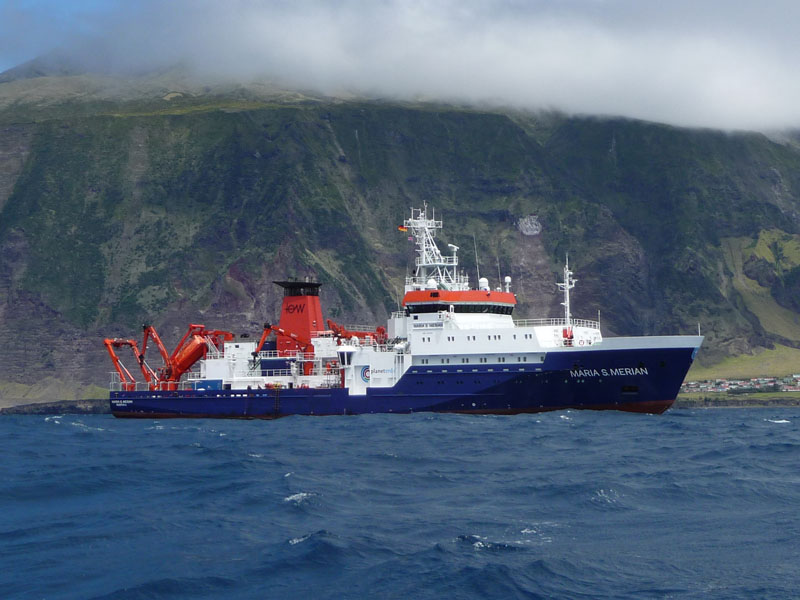MARIA S. MERIAN MSM74
- Area:
- North Atlantic
- Time:
-
25.05.2018 - 26.06.2018
- Institution:
- GEOMAR
- Chief scientist:
- Johannes Karstensen
The North Atlantic Ocean is one of the most important drivers for the global ocean circulation and its variability on time scales beyond interannual. It could be shown that global climate variability is to a large extent triggered by changes in the North Atlantic sea surface state. The climate of Europe is strongly influenced by the North Atlantic ocean circulation, in particular the eastward transport of warm water with the North At-lantic Current has a strong impact on the mild winters in Northern Europe. The North Atlantic Current is to be seen as a connection between the warm, subtropical Gyre and the cold, subpolar Gyre. A driver for the connection between the gyres, and as such for the North Atlantic Current, is the water mass transformation, and in particular the sinking of water, in the Northern North Atlantic – north of the Greenland-Scotland Ridges and in the Labrador and eventually Irminger Sea.
Intense cooling in winter make the surface water more dense and drives a sinking of the water. The water that has been transferred from surface to great depth spreads preferentially southward, concentrated in intense currents (Fig. 6). Most prominent is the “Deep Western Boundary Currents” (DWBC) that transports water ventilated water masses in a well defined current southward. Beside the deep water formed in the subpolar gyre, the DWBC transport water from the overflow regions southward. The strength as well as the characteristic of the DWBC are an indicator for the integral effect of time variability in the formation region of the water masses and the processes in the overflow region.
As such it is critical to survey the DWBC regularly and over long periods of time to create time series of flow and properties to be able to decompose the variability of the DWBC on its different time scales.
The scientific program of the MARIA S. MERIAN MSM74 expedition is dedicated to the studies on the intensity of the water mass transformation and the southward transport in the DWBC. The measurement of the current vertical structure of the ocean during the MSM74 expedition, regarding hydrography (temperature, salinity, density), oxygen, optical properties and the flow is carried out with the help of the CTD probe. Close to the surface, permanent registrations are carried out with the thermosalinograph (temperature, salinity) and meteorological data are continuously collected. Flow measurements up to 1000m depth are performed with the ships installed ADCPs. The expedition is a contribution to national (RACE) as well as international projects (NACLIM, OSNAP, AtlantOS).



